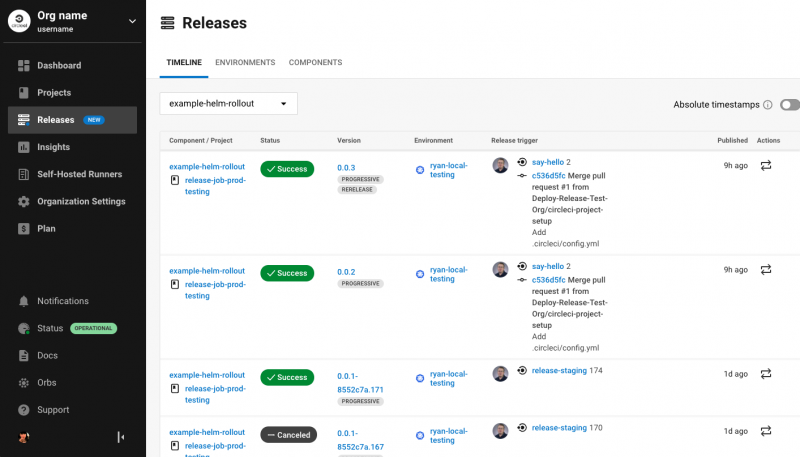 APPS
APPS
 APPS
APPS
 APPS
APPS
Software continuous integration and delivery platform for DevOps teams Circle Internet Services Inc. today introduced CircleCI releases, a new capability that allows developers to automate the release orchestration process directly within the dashboard, greatly simplifying deployment.
CircleCI’s platform provides continuous integration and delivery capability for developers and engineers using automated processes to allow for developing and shipping code faster with fewer errors before it goes into production. However, that doesn’t always mean it reaches production – even with no errors — and the new code may have unexpected results for customer experience.
Rob Zuber, chief technology officer at CircleCI, told SiliconANGLE in an interview that the new automated tools are designed to aid developers by instilling greater confidence that they can deploy in stages, track user experience and pull it back quickly if something goes awry.
“We sort of realized over time, some things have changed — more third-party services, more third-party libraries, more complex, like microservices-based architectures, every complexity is increasing,” Zuber explained. “I think we’ve always realized that we were never airtight by the time we put something into production. And so we’re really embracing that and saying: ‘How do I feel confident until the last customer that’s going to use this is using it?’”
With CircleCI releases, developers now have the ability to automate the entire pipeline and focus on customer risk in a rollback-friendly way, Zuber said. This means that as deployments happen, code can be sectioned out so it slowly rolls out to the user base in segments, defined by the developers, so that they can watch it happen through cohorts or other predefined stages so that if something begins to go wrong it can be pulled back quickly without affecting the entire user base.

As code is rolled out, developers receive real-time validation in metrics from the production environment and they can set thresholds, triggers and guardrails as to how they expect it to perform. Flexible subsets for release could include internal testers, beta customers and external low-risk customer groups.
If one of these groups begins to experience degraded performance or certain conditions are met according to policies set by the developer, a release agent can trigger an automated rollback. By automating the software validation and rollback process, developers can save time and energy on reacting to potential issues being experienced by customers, as manual rollbacks can take up to 45 minutes to an hour, and might even happen during off hours for a company that might not have global offices.
Zuber said for developer teams this really puts the ball back in their court. “We’re confident, and we’re going to put that out in front of our customers,” he said. “And we have a system of controls that allows us to deal with any issue that comes up, instead of the classic throwing it over the wall and hoping someone else is able to manage the rollout.”
Support our mission to keep content open and free by engaging with theCUBE community. Join theCUBE’s Alumni Trust Network, where technology leaders connect, share intelligence and create opportunities.
Founded by tech visionaries John Furrier and Dave Vellante, SiliconANGLE Media has built a dynamic ecosystem of industry-leading digital media brands that reach 15+ million elite tech professionals. Our new proprietary theCUBE AI Video Cloud is breaking ground in audience interaction, leveraging theCUBEai.com neural network to help technology companies make data-driven decisions and stay at the forefront of industry conversations.